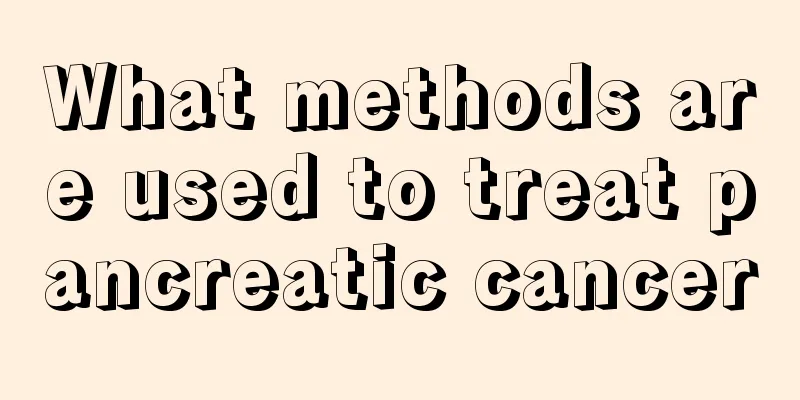What methods are used to treat pancreatic cancer

|
The emergence of pancreatic cancer undoubtedly sentences patients to death, because the disease is a malignant tumor with the worst prognosis. Since the early symptoms of pancreatic cancer are not obvious, the diagnosis rate is very low, and its surgical mortality rate is very high. It is extremely difficult to cure it. So, what methods are generally used in the clinic for the treatment of pancreatic cancer? 1. Surgical treatment: Surgery is the only possible cure. Surgical methods include pancreaticoduodenectomy, extended pancreaticoduodenectomy, pylorus-preserving pancreaticoduodenectomy, and total pancreatectomy. However, due to the difficulty in early diagnosis of pancreatic cancer, the surgical resection rate is low, and the five-year survival rate after surgery is also low. For pancreatic cancer with obstructive jaundice that cannot be removed, cholecystocystostomy or bile duct jejunostomy can be selected to reduce jaundice and improve the patient's quality of life. Stents can also be placed under endoscopy to relieve obstruction. 2. Palliative treatment: For cases that are not suitable for radical surgery, it is often necessary to relieve obstructive jaundice. Generally, cholecystojejunostomy is used. If conditions are unavailable, external fistula (cholecystostomy or external bile duct drainage) jaundice reduction surgery can be performed. Most patients can relieve symptoms and improve their overall condition in a short period of time. The general survival time is about six months. 3. Comprehensive treatment: Pancreatic cancer has a high degree of malignancy, a low surgical resection rate, and a poor prognosis. Although surgery is still the primary treatment method, pancreatic cancer is often discovered late and loses the chance of radical cure, so comprehensive treatment is needed for pancreatic cancer. So far, like most tumors, there is no efficient and fully applicable comprehensive treatment plan. The current comprehensive treatment is still based on surgical treatment, supplemented by radiotherapy and chemotherapy, and new methods of combining immune and molecular biological treatments are being explored. 4. Symptomatic supportive treatment: In the late stage of pancreatic cancer, patients with steatorrhea due to pancreatic exocrine insufficiency can take pancreatic enzyme preparations during meals to help digestion. For intractable abdominal pain, analgesics, including opioid analgesics, are given; if necessary, 50% to 75% ethanol is used for celiac plexus injection or sympathectomy. Radiotherapy can relieve pain in some patients. Nutritional support should also be strengthened to improve nutritional status. If we want to avoid this terrible disease in our lives, we need to start from the little things, strengthen physical exercise, strengthen physical fitness, exercise more in the sun, and sweat more to excrete acidic substances in the body with sweat to avoid forming an acidic physique. Do not eat too much salty and spicy food, do not eat overheated, overcold, expired and spoiled food, develop good living habits, quit smoking and limit alcohol. |
<<: What are the traditional Chinese medicine formulas for treating pancreatic cancer
>>: What is the routine for fibroid care
Recommend
What to do if your cheeks are dry, red and stinging
Dry cheeks are a problem that many people with dr...
Which is the best pancreatic cancer hospital
Which hospital is good for treating pancreatic ca...
The harm of lung cancer to future generations
What are the hazards of lung cancer to future gen...
Briefly describe the common symptoms of bone cancer
Bone cancer is also very common in our lives. If ...
How to train the inner chest muscles the fastest
In fact, many male friends are not so satisfied w...
What can high-gluten flour do?
Flour is a very important food ingredient in life...
Snake skin is delicious
I don't know if you have ever eaten snake mea...
What should I do if the vaccination site becomes red and swollen
Many mothers have found that after taking their b...
Can boron medicine cure breast cancer?
Can boron drugs cure breast cancer? 1. Boron is n...
Can potato juice treat constipation?
Constipation is a problem that many people suffer...
Symptoms of respiratory syncytial virus
Respiratory syncytial virus is a harmful virus. I...
What is the reason why teeth look like saw teeth?
Teeth are an indispensable part of the human body...
Is intestinal type gastric cancer highly malignant?
The malignancy of intestinal type gastric cancer ...
Can cervical cancer in the elderly be cured?
Cervical cancer in the elderly can be cured, prov...
What are the ways to relieve cough with egg sesame oil?
After middle age, as people age, their blood vess...









